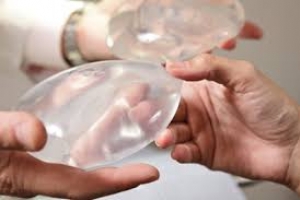Call Today ![]() 770.794.6643
770.794.6643
Recovery
Patients who decide to undergo breast augmentation surgery have a certain idea in mind for how the procedure will improve their appearance. They may picture themselves with fuller breasts that will give them the cleavage that they did not naturally have. With this in mind, it can come to a shock for some patients to discover that the reality of the results of their breast augmentation did no match up to what they had in...Read More
It is much safer to get breast implants today than it was even five years ago. Technology has significantly improved, creating better implant shells, with sturdier and more natural constructions, to make them more durable and less likely to rupture once they are in the body. Though implant construction has improved greatly, there is still a risk of implant failure. Implant failure does not typically pose significant...Read More
Symmastia is a rare condition marked by the apparent fusion of the breasts. This can make it appear as though the breasts have merged with one another. Women who have symmastia can schedule a consultation with a board certified plastic surgeon to have the condition corrected.
Causes of Symmastia
Symmastia occurs when the breasts converge. It can be caused by a congenital condition or, more commonly, as a side effect of...Read More
Immediately after breast augmentation surgery, the implants will sit very high on the patient’s chest, especially if the implants are placed under the muscle. This is due to the initial swelling and the fact that gravity has not had a chance to influence their final position. Depending on the individual and her lifestyle, it can take up to six months for the breasts to sink a bit and look more natural, though in most...Read More
Clotting, or coagulation, is a part of hemostasis, and occurs anytime there is trauma to blood vessels. It is an immune response wherein platelets and fibrin in the blood stream gather and clump together at the site of trauma. This is how the body prevents excessive bleeding while it repairs the broken blood vessels. Some clotting is good. Scabbing is an example of this. However, a large clot can break off and travel through the blood stream and inhibit the function of an...Read More
Patients who are considering a facelift cosmetic surgical procedure may be particularly worried about incision healing and scars. After all, if a patient has decided to spend the money for a facelift procedure, they are doing so in an effort to improve their appearance. Unsightly or obvious scars detract from that. Dr. Marcus Crawford and Dr. Steven Bailey can help patients reduce the appearance of facelift procedure scars. Below are some risk factors for scarring, as well as what can be...Read More
Following a mastectomy for breast cancer, breast reconstruction is often performed to recreate the breast mound. One such procedure to do this is the Deep Inferior Epigastric Artery Perforator (DIEP) flap breast reconstruction procedure.
What Is the DIEP Flap Procedure?
In the DIEP flap procedure, excess tissue, skin, and blood vessels are taken from the patient’s abdominal region to create...Read More
Although a leaking or ruptured saline breast implant is not an emergency, the problem should be addressed as soon as possible to correct any deformities in breast shape and remove the implant shell. Fortunately, saline implant leaks or ruptures are easier to detect than silicone implant ruptures. In the case of silicone implants, leaks are detected through the use of routine mammograms, as the silicone-gel filler is designed to stay in place rather than leak into the body.
If saline...Read More
Your cosmetic surgery was a success. You’ve been sent home with a stack of informational material from your doctor about how to take care of yourself after the surgery. This may include instructions on changing your dressing, bathing or showering, reducing scarring and infection, and certain...Read More
Capsular contracture is an abnormal response of the body’s immune system in response to the presence of a foreign body. This may occur with artificial joints, pacemakers, or orthopedic prosthetics. However, perhaps the most common occurrence is following breast augmentation, when the body rejects the implants. A capsule of hard scar tissue forms around the implant; this is the body’s way of attempting to seal it off from...Read More




